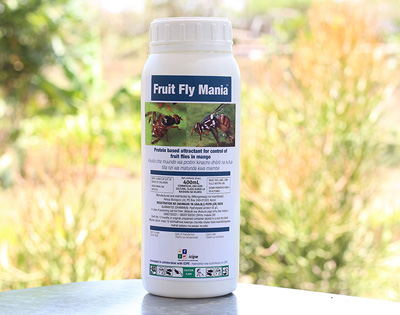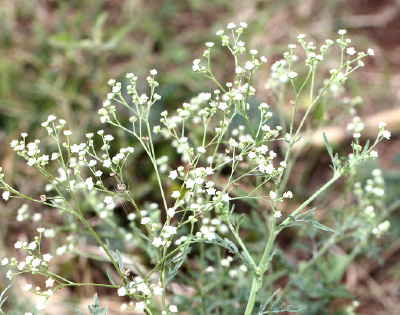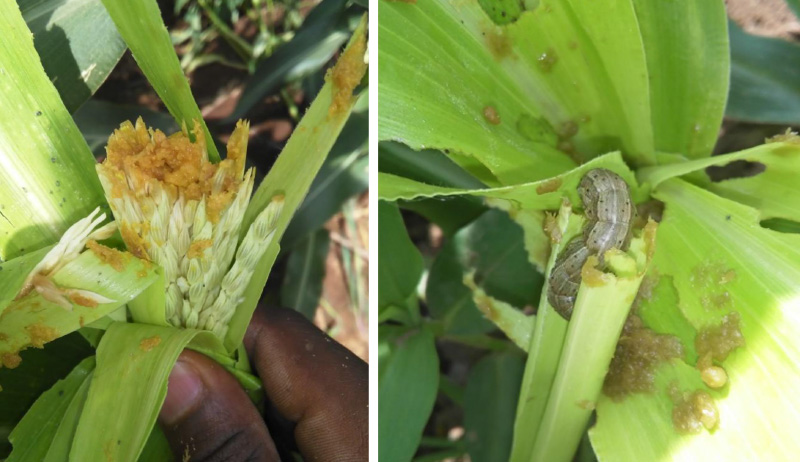Invasive species and Africa
Back in the 1950s, Charles Elton, an English ecologist and zoologist, introduced the term “invasion” to describe destructive ecological explosions of exotic plants and animals.
Today, Elton’s military derived metaphor, which first appeared in his seminal book The Ecology of Invasions by Animals and Plants, has led to the adoption of the term “invasive species” as the universal definition of animals, plants and microbes introduced accidentally or deliberately outside their natural habitats or countries of origin. The analogy of invasion also served as an early warning for a broad range of invasive species catastrophes with which we have become all too painfully familiar.
Despite several international mechanisms (for example, the Convention on Biological Diversity (CBD)), established to tackle invasive pests, their threat continues at an alarming rate, bolstered by globalisation, increasing movement of people and goods, land use changes, climate change, and physical and chemical disturbance to species distribution.
Indeed, globally, invasive species are now considered the second most important threat to nature, due to their severe and cross cutting impact on ecosystems, human and animal health, infrastructure, economic and cultural resources.
In sub-Saharan Africa (SSA), one of the most susceptible regions, the list of invasive species is long and diverse; their destruction often horrendous. As an example, since January 2016 the Fall Armyworm, a caterpillar that is endemic to the Americas, has been devastating maize and other crops in at least 20 African countries, placing at risk the food security, and indeed the very livelihoods, of around 300 million people.
Icipe research on invasive species
The Fall Armyworm, a hazard that icipe is currently addressing, piles on to a range of invasive species related threats. Some that have been the subject of icipe research in the recent past include the maize lethal necrosis disease (MLDN), caused by the maize chlorotic mottle virus and sugarcane mosaic virus. The Centre has also conducted studies on the larger grain borer, Prostephanus truncatus, a serious postharvest pest capable of reducing stored grains to pulp, which was introduced from Central America into Africa in the late 1970s.
Africa’s backup staples, like potato, have not been spared from the invasion peril. Two years ago, the potato cyst nematode (PCN), microscopic, soil dwelling roundworm that are highly destructive to potatoes worldwide was reported in eastern Africa. icipe and partners, through the support of the Food and Agriculture Organization of the United Nations (FAO), have established that the pest has invaded several potato growing areas in Kenya.

The continent’s horticultural sector also continues to face untold challenges as a result of invasive pests. New entrants within the last five years alone include the oriental fruit fly, Bactrocera dorsalis, a native of Asia, which is now present in more than 30 African countries. Aside from ruining fruit and vegetable yield, at times up to 100%, B. dorsalis, like other fruit fly species, is also a quarantine pest, and its presence in Africa restricts the export of produce from the continent to European markets and emerging markets in North America. Other invasive fruit fly species on the continent include B. zonata, B. cucurbitae and B. latifrons. Further, icipe and partners have recently detected the Asian citrus psyllid, Diaphorina citri, a sap-sucking insect that can transmit the lethal citrus disease huanglongbing, also known as ‘citrus greening’. In addition, Tuta absoluta, a devastating leafminer originating from Peru has swept across Africa, leading to the declaration of a state of emergency in some of the continent’s main tomato producing areas. icipe and partners are making significant progress in addressing these challenges.
Meanwhile, emerging infectious diseases like malaria, Rift Valley fever, yellow fever and dengue, pose constant and growing threats to the continent. This is because, while these diseases are already causing significant problems in endemic zones, they are now also spreading to new geographical areas in Africa, and due to a number of factors, including climate change, they also represent a constant threat to regions beyond the continent. icipe recognises the responsibility of preventing the spread of emerging infectious diseases, and has therefore made this a focal research area.

Further, the Centre has focused attention on invasive weeds, like the Prosopis genus, enlisted for rehabilitation of African dry lands in the 1970s, but has since turned out to be a noxious, extremely aggressive invader that replaces native vegetation and colonises important ecosystems like rangelands. A native of North and South America, Parthenium is considered one of the world’s most serious invasive plants. In East Africa, Parthenium is extensively spread over cultivated and pastoral lands. A significant element is the weed’s ability to sustain the malaria-transmitting mosquito, Anopheles gambiae, by extending its life, as a preferred sugar source, even in the absence of a blood meal.
icipe is also investigating Parthenium hysterophorus, known as famine weed in parts of East Africa, and its relationship to increase in malaria incidents in East Africa.
Creating a strong line of defence
The degree of invasive pests introductions, globally but especially in Africa, suggests lack of adequate contingency planning, preparedness and management measures. A three-stage approach is recognised internationally: prevention, early detection, and control and restoration.
Prevention involves pest risk analysis by relevant regulatory authorities to predict possible arrival, potential pathways, and the chances of a particular pest or pathogen becoming established in a new location. This information should allow regulators to determine the risk mitigation steps and the necessary phytosanitary measures to ensure that the risk is kept at acceptable levels. Ultimately, significant attention should be given to accurate and timely detection of invasive species as a solid basis to respond to invasive species, reducing prophylactic treatments in case of already established species and ensuring economic and environmental benefits.
The steps outlined above should create a systematic, coordinated, consolidated, proactive and rapid response, based on a clear contingency plan, supported by enforceable policies, reference points, and an inventory of management options.
Unfortunately, in many cases in SSA, the response to invasive pests has been reactive and ad hoc rather than proactive. As discussed later in this publication, icipe has been collaborating with a number of partners to rectify this situation. In addition, the Centre in partnership with CABI and the International Institute of Tropical Agriculture (IITA) are planning a major workshop on invasive species in Africa later in 2017.
icipe recommendations
- To effectively tackle invasive species in Africa, we recommend the following:
- Development of high-level scientific and policy dialogue between relevant authorities and stakeholders in regard to invasive species, and broad awareness creation of their economic impact.
- Strengthening of phytosanitary capacity and systems in Africa.
- Reinforcement of interdisciplinary research in the design and implementation of scientific and programmatic interventions for invasive species.
- Support for continent and nationwide surveillance of invasive species.
- Integration of invasive species threats into national disaster response units.
- Creation of coordinated and collaborative resource mobilisation for invasive species activities.
- Emphasis on novel intervention solutions that provide a sustainable way of controlling invasive pests.
- Support for crowd sourcing and citizen science in the management of invasive species.
This column may be reproduced in full or in an abridged format while maintaining the author's byline and including the following acknowledgment: This article was first published in the icipe quarterly e-bulletin, Volume 7, issue No.2, 2017, available at http://www.icipe.org/publications/newsletters.
Sections quoted from this column may be attributed to Dr Segenet Kelemu, Director General, International Centre of Insect Physiology and Ecology (icipe).


